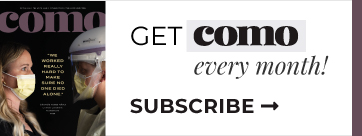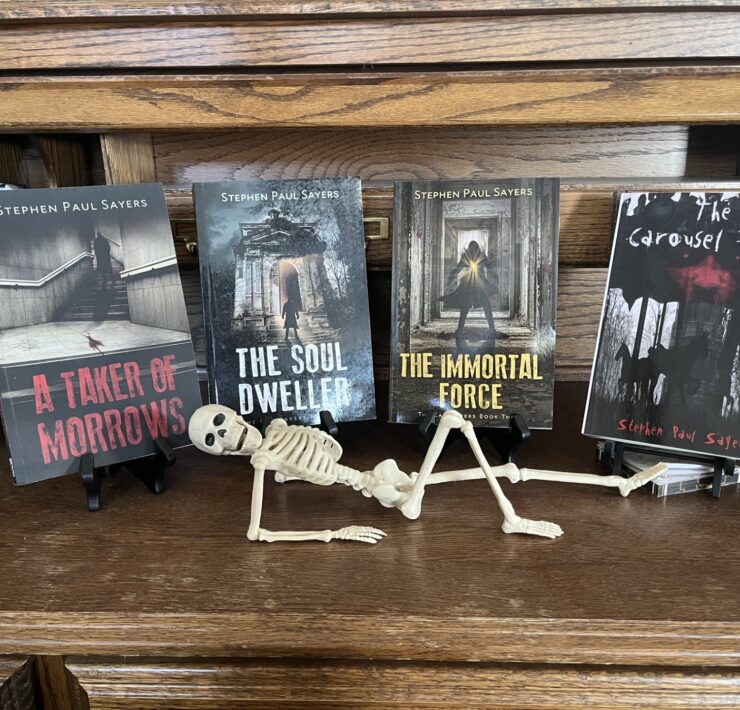Off the (Smart)phone
- This story originally appeared as "Off the Phone" in the September 2024 "Education" issue of COMO Magazine.

New Columbia Public Schools policy seeks to mitigate smartphone distractions.
Want to generate deep feelings of nostalgia? Scan through photos of your high school days. It’s not only the faces and smiles of old friends and acquaintances but also the setting that gives clues about the place and period in which the photos were snapped. For anyone who graduated in the twentieth century, there’s one thing missing from the setting that today’s teens would never be caught without.
Smartphones. The electronic gadgets are perhaps the most ubiquitous accessory at all levels of life these days, whether at home, work, or school.
But when Columbia Public Schools began its 2024-25 academic year on August 20, a new cell phone policy — either a ban or a restriction, depending on who you ask — was in place to separate students from their mobile phones, at least for part of the school day. The school district announced the coming policy in late spring.
Even as the new school year began, many parents reported that they still were unaware of the policy’s details and how teachers and administrators will enforce it.
Through media reports, district spokeswoman Michelle Baumstark pointed out that the district already had an established cellphone policy. The new procedures put in place ahead of the new school year are designed to improve the way the district enforces the policy — and clarify expectations about the phones and other electronic devices.
Here’s the policy and enforcement measures in a nutshell, according to communication on the CPS website:
- In high school, students will not be allowed to use their cellphones during class time. Phones must be out of sight in any classroom or “dedicated learning environment.”
- In middle school, cellphones use will not be allowed at any time during the entire school day. That means students may not use their phones during class, in the hallway, during lunch, or any other time.
“I think it will calm things down in the classrooms so the kids can learn,” said Rachel Worthington, whose son (a junior) and daughter (a senior) attend Hickman High School.
Worthington, a Columbia resident since 1994, said her daughter was at first somewhat distraught over the cellphone policy, saying “they’re talking about taking our phones away at school.” Worthington said she tries to balance the reasons some students will be reluctant to comply with the policy with the district’s stated objective of creating a better learning environment with fewer distractions.

“My daughter said, ‘I’m not giving up my phone. What if something bad happens?’” Worthington said, adding, “I think these days kids are so concerned about an active shooter.”
Last year, she said, an incident at school created confusion and many students felt as if they were in danger. Cellphones were a link to the outside world.
“I think we all do that with our cellphones,” Worthington said, remembering that once upon a time, “We always had ways to get in touch with our parents, before we had cell phones. But it’s a different world now.
Worthington was still perplexed about not knowing more details or a plan to enforce the policy.
“There are ways other schools have done it. But I think completely banning phones at school is not feasible,” she said. “I tell my daughter that this is temporary, put your phone away, and listen to your teacher.”
How will the cellphone restriction be enforced? The school website spells that out. After the first offense, students will be given a verbal warning from a teacher or staff member. For subsequent offenses, phones and other personal electronic devices will be confiscated and stored in the school office for the rest of the day. Repeat offenders may be required to have a parent or guardian retrieve their phone.
The school district further explained the rationale for the policy.
“We have seen in our buildings that cellphones, earbuds, and other personal electronic devices do not often serve a helpful academic purpose,” CPS said in a statement on its website. “We have a responsibility to respond to the growing issues of cyberbullying while also fostering healthy hallways and classrooms.”
Specifically, the updated policy — presented as “expectations” — are designed to create a more conducive learning environment, reduce distractions, promote face-to-face interactions, and ensure “students are fully engaged in their educational activities.”
CPS is hardly a pioneer in school districts regulating cellphone use. According to the National Center for Education Statistics, more than three-quarters of K-12 schools in the country prohibit cellphone use to some degree. And, in some cases, the decision is being passed down from state legislatures. Indiana, Florida, and Ohio have passed laws requiring schools to limit or prohibit cellphones. At least a handful of other states are considering similar legislation.
“It is a distraction — kids are texting each other, watching movies, whatever they’re doing,” Worthington added. She agrees that a policy and enforcement is needed, but she isn’t sold on taking a device away from a student.
Adding another layer to the cellphone restriction or prohibition picture is the growing chorus of mental health professionals joining education administrators who are expressing concern about safety and mental health. Some have pointed to U.S. Surgeon General Dr. Vivek Murthy asking Congress to require warning labels on social media platforms that are similar to warnings that appear on tobacco products. While not directly tied to cellphone restriction policies, health and school officials have cited cellphone and social media use as significant sources of bullying and social pressure.
In a June 17 opinion piece in The New York Times, Murthy said that social media is a contributing factor in the mental health crisis among young people. According to 2022 data from the Pew Research Center, up to 95 percent of youth ages 13 to 17 say they use a social media platform, and more than a third say they use social media “almost constantly.”
Whether a health warning label on social media platforms ever comes to fruition — such labels would certainly be challenged in the courts by tech companies and free speech advocates — remains to be seen. But Murthy does connect the issue to schools and parents for regulation and enforcement. He said schools and parents need to participate in providing phone-free times.
In fact, the European Union and most schools across Europe have digital rules prohibiting or restricting social media and digital devices for teens.
Meanwhile, Columbia students and their parents will learn how to navigate the new cellphone rules together.
“It’s not like you can ask kids to leave their phones at home,” Worthington said. “But, personally, I think that kids should put their phone in their bag and listen to their teacher. There’s no reason not to be respectful to the teacher.”
And that strikes another chord for a different conversation about cellphones and school rules. Children model their parents, Worthington said, and that modeling should be about behavior toward teachers and how to conduct yourself in the classroom.
“It’s really sad,” she explained. “When I was in school, if you talked back to your teacher, if you were disrespectful, you got sent to the principal’s office. I’m not sure if that still happens.”








